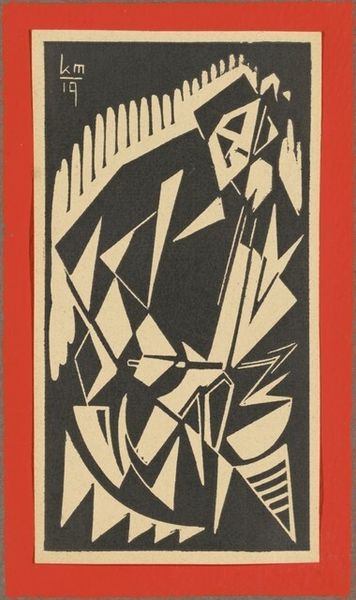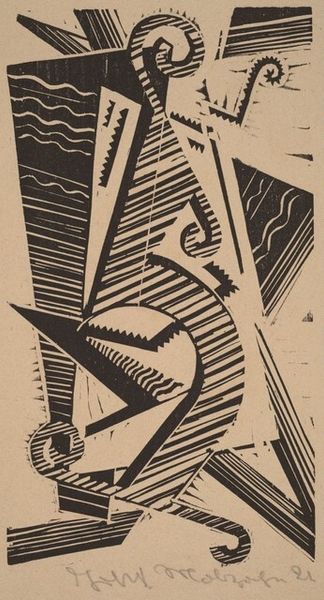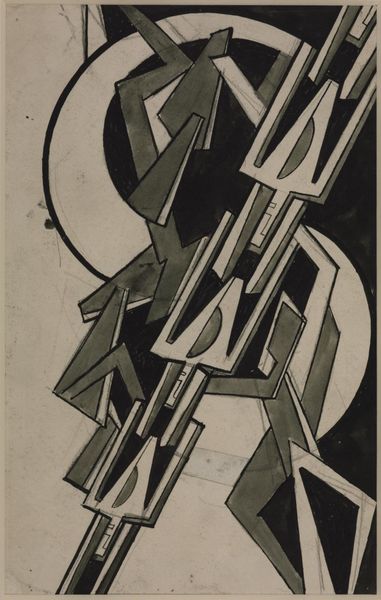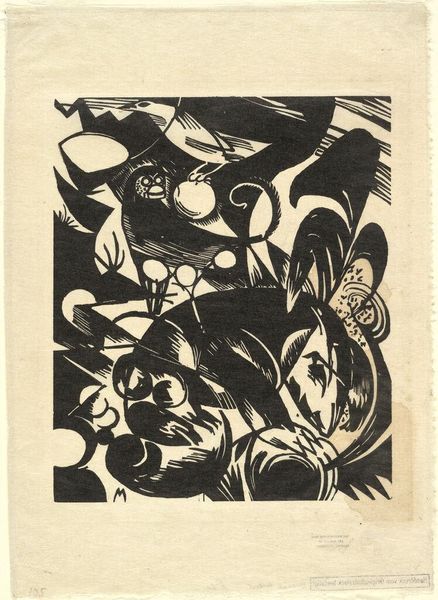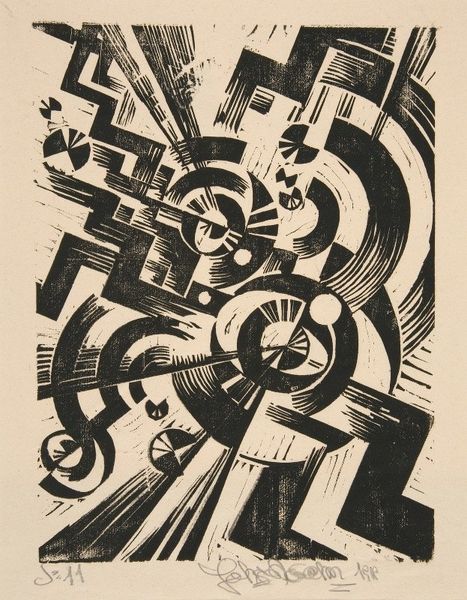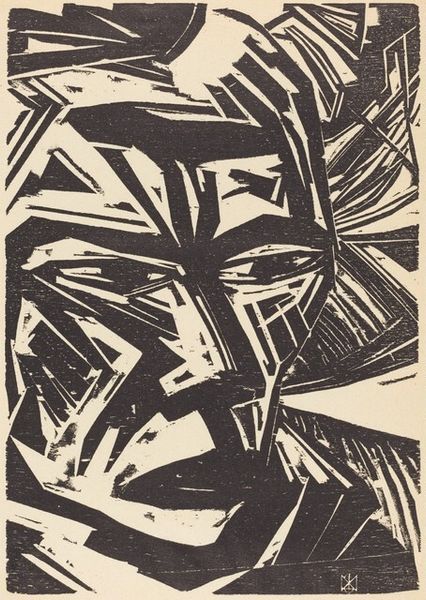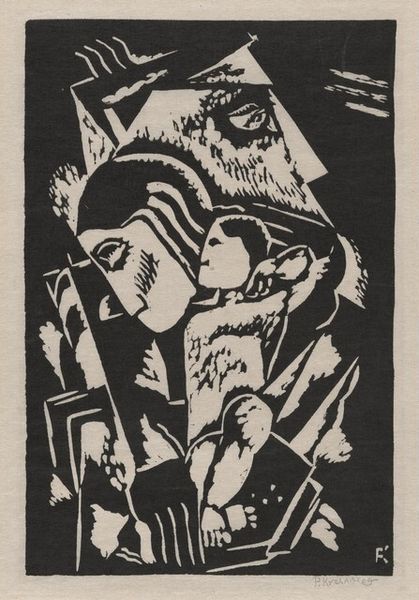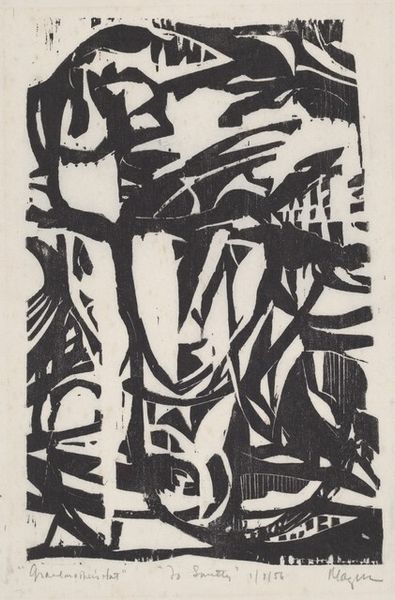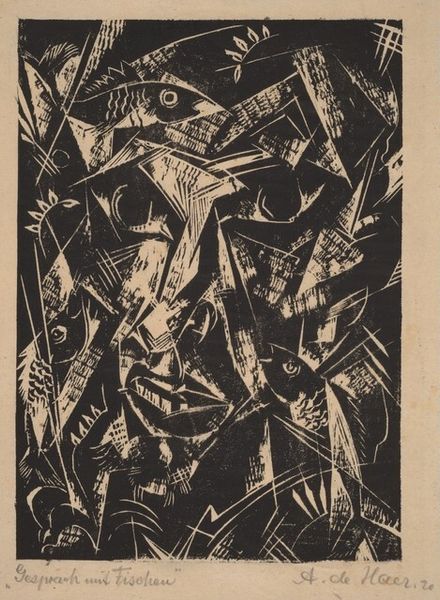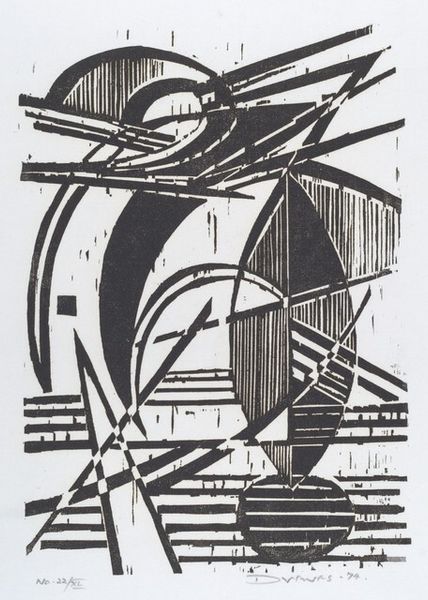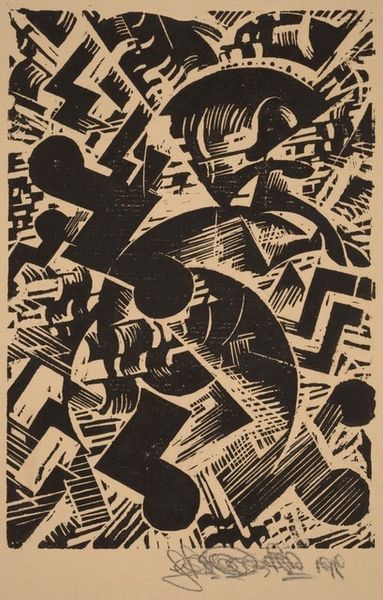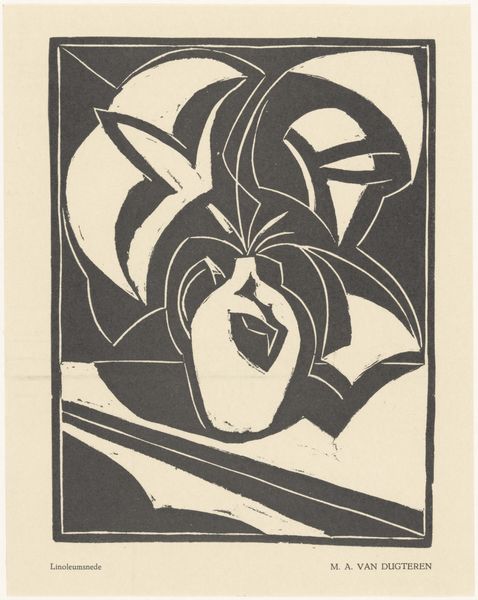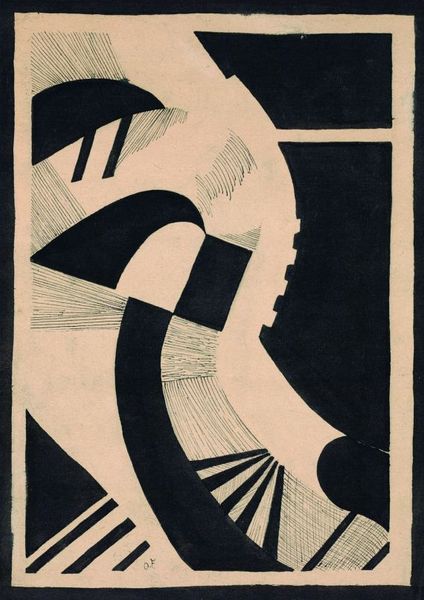
drawing, paper, ink
#
portrait
#
art-deco
#
drawing
#
cubism
#
ink paper printed
#
figuration
#
paper
#
abstract
#
ink
#
geometric
#
line
#
modernism
Copyright: Public Domain: Artvee
Curator: Winold Reiss's "Drawing in two colors" from 1915 is a striking example of early modernist portraiture rendered with ink on paper. Editor: It has a fragmented and frenetic energy, doesn't it? The high contrast and abstracted forms create a scene that is somehow both claustrophobic and bursting with movement. Curator: The artwork deploys a deliberate visual economy. Note how Reiss leverages only two colors and bold outlines to delineate figures and objects. It really foregrounds his deft manipulation of positive and negative space, wouldn't you say? The flat planes interlock in ways that undermine any singular reading of depth, adhering to cubist principles. Editor: Indeed. And I see in that compression an echo of the social milieu from which it springs – a burgeoning sense of industrial modernity. The flattening of perspective parallels, for me, the destabilization of traditional hierarchies during this period. Note how it challenges conventional portraiture by dissolving the individual into fragmented parts. Curator: One could read those fractured shapes as echoing art deco influences as well. Observe how the angularity is tempered with just a touch of decorative flourish; the curves in the figure's striped dress or in the hat. The eye traces dynamic vectors throughout the picture plane—all quite captivating formal solutions. Editor: Agreed. The use of such a stark monochrome palette seems also, though, to strip bare the underlying tensions simmering beneath that period of apparent elegance. There is a racialized element too: what do you read from the black figures in the upper portion? Reiss spent much of his career focusing on portraiture of Black and Indigenous subjects. Curator: I appreciate you introducing the conversation about identity here. One way I read it is that Reiss may be utilizing abstract forms to explore aspects of subjectivity that surpass surface representation—offering insight to modern themes rather than fixating on representational likeness. It offers multiple aesthetic perspectives in that way. Editor: Perhaps so. But even within abstraction, codes of representation persist. These portraits open up conversations, I would argue, regarding questions of performance, display, and cultural encounter—particularly in a society deeply structured by racialized assumptions and norms. The drawing speaks less, however, in a clear-cut statement. It demands contemplation about that complexity. Curator: Ultimately, Reiss gives us not a mirror but a prism, bending light and form to reveal the multifaceted nature of early 20th-century modernism. Editor: Yes, a potent reminder that artistic experimentation rarely occurs in a vacuum. I think we must, then, examine works as products of specific conditions to appreciate its resonance more completely.
Comments
No comments
Be the first to comment and join the conversation on the ultimate creative platform.
